I have Azure SQL database in Standard tier, 10 DTU.
How can i "predict" performance on CPU intensive queries (as that seems to be reason for slowness)?
To illustrate problem will use perf_test table, that can be populated like this (script could be improved a lot, but that is not a point here):
CREATE TABLE dbo.perf_Test
(
PolicyDescriptionID INT IDENTITY PRIMARY KEY,
col1 NVARCHAR(100),
col2 NVARCHAR(100),
col3 NVARCHAR(100),
col4 NVARCHAR(100),
col5 NVARCHAR(100),
)
GO
SET NOCOUNT ON;
DECLARE @i INT = 0
WHILE @i < 100000
BEGIN
DECLARE @NumberI int = CAST(RAND() * 100000 AS INT);
DECLARE @NumberC VARCHAR(6);
SET @NumberC =
CASE
WHEN @NumberI < 10 THEN '00000' + CAST(@NumberI AS VARCHAR(6))
WHEN @NumberI < 100 THEN '0000' + CAST(@NumberI AS VARCHAR(6))
WHEN @NumberI < 1000 THEN '000' + CAST(@NumberI AS VARCHAR(6))
WHEN @NumberI < 10000 THEN '00' + CAST(@NumberI AS VARCHAR(6))
WHEN @NumberI < 100000 THEN '0' + CAST(@NumberI AS VARCHAR(6))
ELSE CAST(@NumberI AS VARCHAR(6))
END;
INSERT INTO dbo.perf_Test(col1, col2, col3, col4, col5)
VALUES(
@NumberC, -- char
@NumberC + RIGHT(@NumberC, 3) + @NumberC, -- casts as nvarchar
@NumberC + 'adslk3ājdsfšadjfads',
@NumberC,
@NumberC
);
SET @i = @i + 1;
END
For many queries azure will perform same as local machine. but for ugly query it performs much worse:
SELECT *
FROM dbo.perf_Test
WHERE
col1 LIKE '%263a%'
OR col2 LIKE '%263a%'
OR col3 LIKE '%263a%'
OR col4 LIKE '%263a%'
OR col5 LIKE '%263a%'
Azure: Scan count 1, logical reads 1932 (rest 0) SQL Server Execution Times: CPU time = 16 ms, elapsed time = 6718 ms
OnPrem: Scan count 1, logical reads 1932 SQL Server Execution Times: CPU time = 563 ms, elapsed time = 482 ms.
Logical reads is the same as for 'bad' example, but this query performs approximately same in azure:
SELECT *
FROM dbo.perf_Test
WHERE col2 = '038743743038743'
Azure: Scan count 1, logical reads 1932 SQL Server Execution Times: CPU time = 32 ms, elapsed time = 22 ms.
OnPrem: Scan count 1, logical reads 1932 SQL Server Execution Times: CPU time = 16 ms, elapsed time = 7 ms.
Returned rows is ~100 rows- same as for 'bad' example, but this query performs approximately same in azure
SELECT *
FROM dbo.perf_Test
WHERE col1 like N'0975%'
Azure: Scan count 1, logical reads 1932 SQL Server Execution Times: CPU time = 16 ms, elapsed time = 26 ms.
OnPrem: Scan count 1, logical reads 1932 SQL Server Execution Times: CPU time = 15 ms, elapsed time = 35 ms.
If i put some CPU intensive query, difference again is huge (2 vs 35 seconds in azure):
SELECT SUM(CAST(t1.col1 AS BIGINT) + CAST(t2.col1 AS BIGINT)), COUNT(t2.col1)
FROM dbo.perf_Test t1
CROSS JOIN dbo.perf_Test t2
WHERE t1.col3 LIKE '%263a%'
OPTION (MAXDOP 1)
